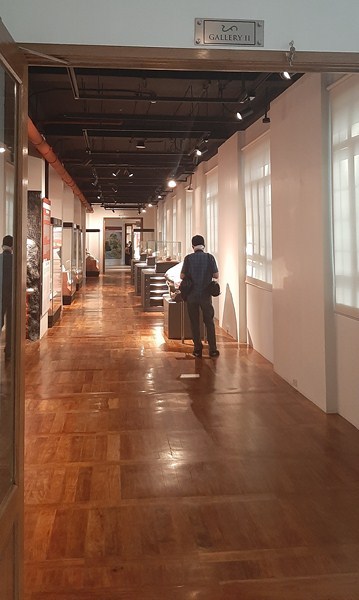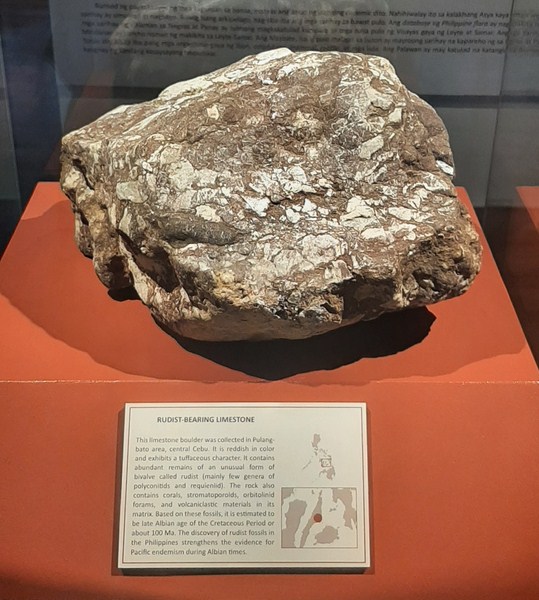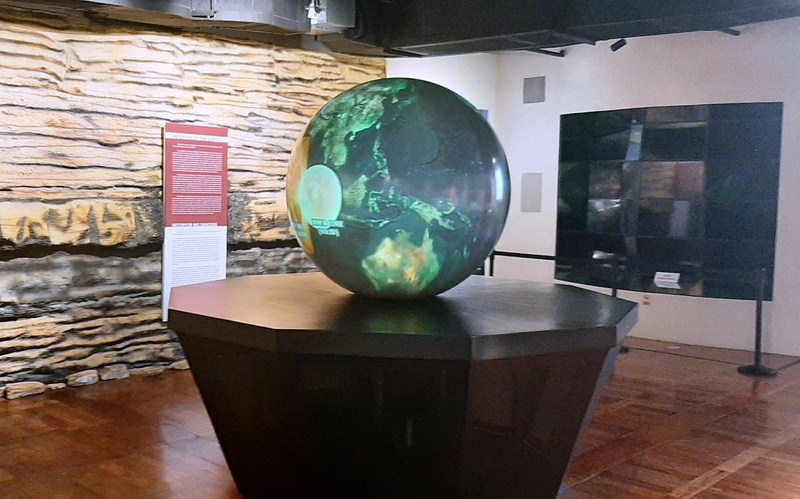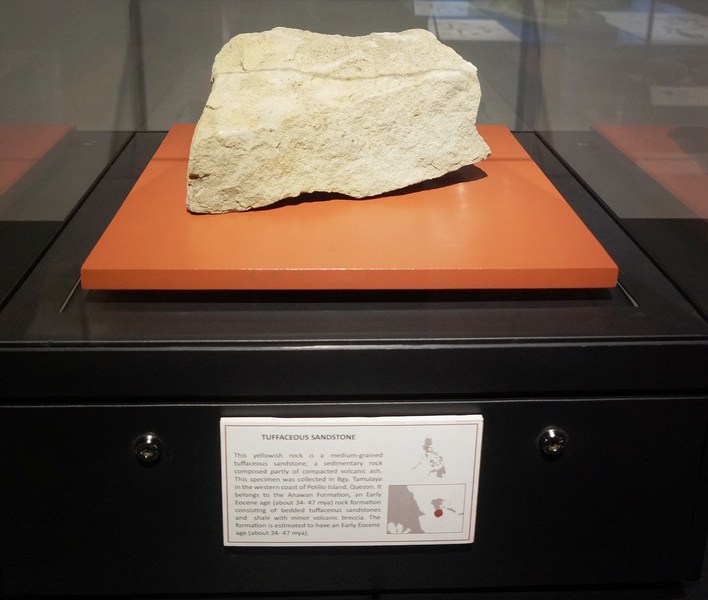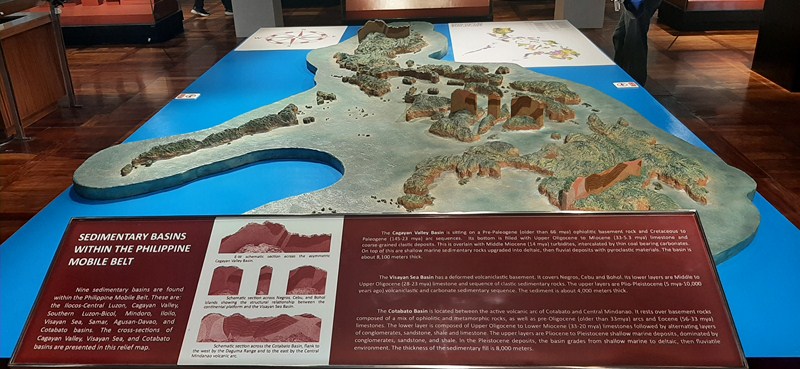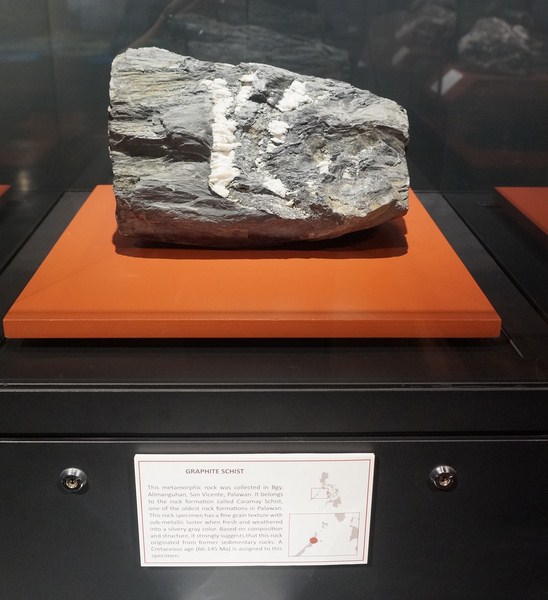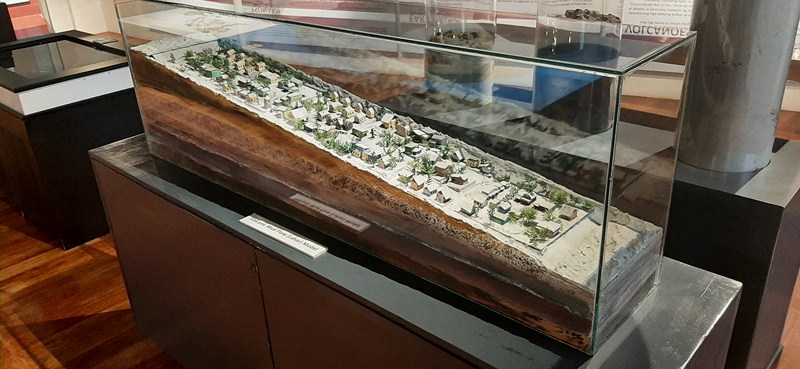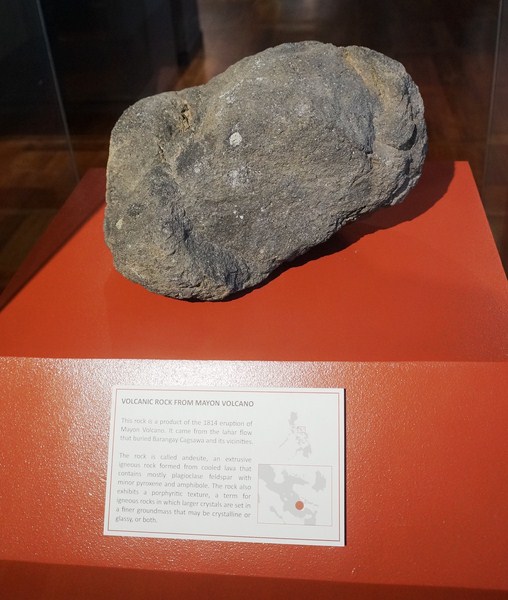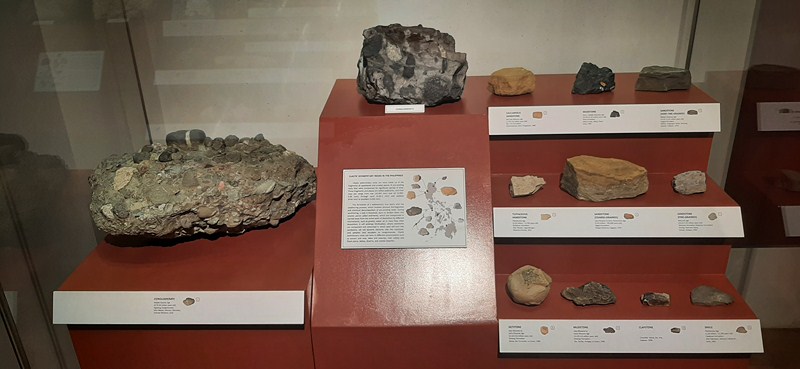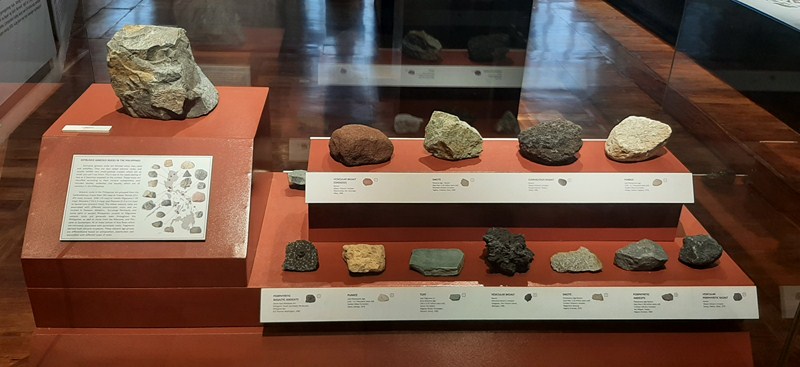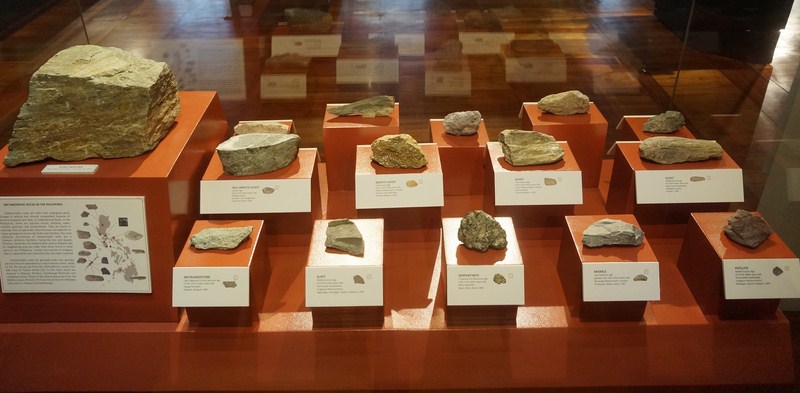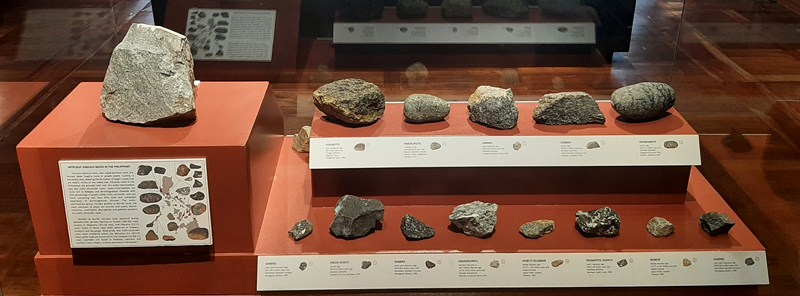Gallery II (The Geology of the Philippines) of the National Museum of Natural History features igneous, metamorphic, and sedimentary rocks that make up the islands of the Philippines.
Check out “National Museum of Natural History“
Here, you can find hardened lavas (such as an andesite boulder from the 1814 eruption of Mt. Mayon) as well as rocks created deep within our Earth’s mantle, some of them more than 250 million years old.
A large relief map of the Philippines, at the center of the gallery, allows you to see the geography of the country in three dimensions.
Featured are the layers of rocks underlying the Cagayan Valley Basin, Visayan Sea Basin and the Cotabato Basin, all sliced and pulled-up for everyone to see where the rocks layers fold and break.
Adjacent to this is a section devoted to destructive natural events like volcanic eruptions, lahars, and earthquakes that negatively affect Filipinos and the environment.
Through this window to the past (quadroscope), museum viewers will also learn the difference between a tsunami and a storm surge, or journey back to the 1991 Pinatubo eruption (the 2nd largest eruption in the 20th century).
This gallery also features an activity corner where kids can put themselves in a geologist’s shoes by getting hands-on tips in identifying common rocks.
To start their very own rock collection, pointers in proper cleaning, maintenance, and storing of rocks and the needed tools are also present to them.
The gallery also has a mini-theater where you can appreciate some of the many beautiful rock formations scattered throughout the country and learn how the Chocolate Hills or the Puerto-Princesa Subterranean River came to be.
Gallery II (The Geology of the Philippines): 5/F, National Museum of Natural History: Agrifina Circle in Rizal Park, T.M. Kalaw Street, corner General Luna Street, Manila. Open Tuesdays – Sundays, 9 AM to 12 noon (cut off time is 11 AM) and 1 to 4 PM (cut off time is 3 PM). Tel: 82981100 local 3000 and 85277889. E-mail: cmvod@nationalmuseum.ph or inquiry@nationalmuseumph.gov.ph. Visitors shall be limited to 100 per museum per session. Visitors are required to pre-book online at https://reservation.nationalmuseum.gov at least a day before the visit. Confirmation of booking will be sent through email.Group reservations are limited to five (5) persons only. Walk-in visitors will NOT be accommodated. Coordinates: 14°34′59.9″N 120°58′55.9″E.

